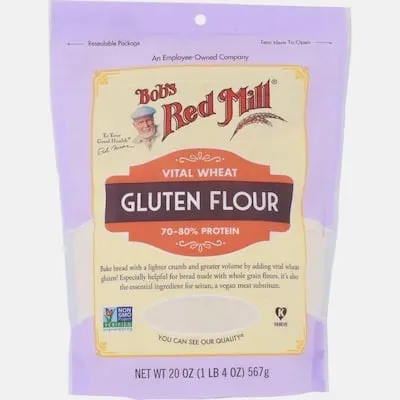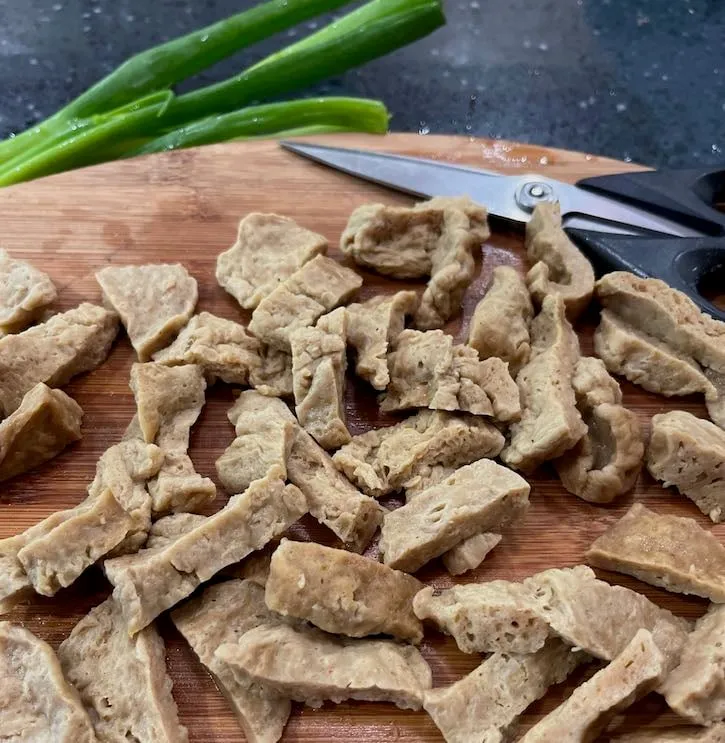Craft Your Own Homemade Seitan: A Step-by-Step Guide to Vegan Meat

Have you ever been curious about making your own plant-based meat alternatives? At Robert Kline Art, we love exploring new creative avenues, and today we’re venturing into the delicious world of homemade seitan! This versatile ingredient is a staple in vegan and vegetarian cooking, and it’s surprisingly easy to make. Whether you’re a seasoned DIY enthusiast or a curious beginner, this comprehensive guide will walk you through crafting your very own seitan from scratch.
Unveiling the Magic of Seitan: What is it?
Seitan, pronounced “say-tan,” is a popular meat substitute made from wheat gluten – the main protein found in wheat. Don’t worry if you’ve heard scary things about gluten; if you don’t have celiac disease or gluten sensitivity, it’s perfectly safe and healthy. Wheat gluten possesses a remarkably meaty texture, making it an ideal base for replicating the taste and feel of various meats.
You might have already enjoyed seitan without even realizing it! Many vegetarian restaurants use it as a convincing meat substitute in dishes like stir-fries, stews, and even sandwiches. While there are pre-made seitan options available in stores, nothing beats the flavor and satisfaction of creating your own from scratch.
Why Make Homemade Seitan?
You might be wondering, “Why go through the effort of making seitan when I can easily buy it?” Well, several reasons make homemade seitan a rewarding endeavor:
- Taste the Difference: Homemade seitan simply tastes fresher and more flavorful than store-bought alternatives.
- Control Your Ingredients: By making your own, you have complete control over the quality of ingredients and can tailor the flavor profile to your liking.
- It’s Fun and Easy: Don’t let the idea of making your own meat substitute intimidate you. With our easy-to-follow instructions, you’ll be surprised at how simple it is!
Gather Your Ingredients: What You’ll Need
Before we embark on our seitan-making adventure, let’s gather our supplies. Here’s a list of the essential ingredients you’ll need:
For the Seitan Dough:
- Vital Wheat Gluten: The star of the show! Look for this in the baking aisle of your local grocery store or health food store.
- Chickpea Flour (or Soy Flour): Adding a small amount of another flour to the vital wheat gluten helps create a more tender texture.
- Water: You’ll need water to form the seitan dough.
For the Flavorful Broth:
The broth is where you can unleash your creativity and infuse your seitan with delicious flavors. Here are the basic components:
- Vegetable Broth (or Water): Use low-sodium vegetable broth for a rich base, or opt for water if you prefer a more neutral flavor.
- Soy Sauce (or Tamari): These add that savory, umami depth to your seitan, mimicking the taste of meat.
- Flavor Enhancers: Get ready to experiment! Common additions include garlic powder, onion powder, dried herbs, liquid smoke, nutritional yeast, and even wine or vinegar for complexity.
 homemade seitan recipe
homemade seitan recipe
Simple ingredients, extraordinary results!
Step-by-Step Guide: Crafting Your Homemade Seitan
Now, let’s get our hands dirty (not really!) and dive into the process of making homemade seitan:
1. Create the Seitan Dough:
- In a mixing bowl, combine 1 cup of vital wheat gluten with ¼ cup of chickpea flour. This ratio yields approximately 2 cups of seitan.
- Gradually add 1 cup of water to the dry ingredients, stirring continuously until a soft dough forms.
- Transfer the dough onto a lightly floured surface and knead for about 5 minutes. Kneading develops the gluten strands, resulting in a delightfully chewy texture.
- Once kneaded, allow the dough to rest for 5 minutes. This resting period allows the gluten to relax, making it easier to work with.
 Bob's red mill vital wheat gluten flour
Bob's red mill vital wheat gluten flour
Vital wheat gluten: Your secret weapon for incredible seitan!
2. Prepare Your Flavor-Infused Broth:
- While your dough rests, it’s time to create a flavor-packed broth that will permeate your seitan.
- In a large pot or saucepan, combine 6 cups of your chosen broth (or water) with your desired flavor enhancers.
- Remember the measurements given in this guide are just a starting point. Feel free to adjust them to your liking and explore different flavor combinations!
Here’s a simple broth recipe for inspiration:
Basic Savory Seitan Broth:
- 6 cups low-sodium vegetable broth
- ⅓ cup soy sauce
- 1 teaspoon garlic powder
- ½ teaspoon onion powder
- ½ teaspoon dried thyme
3. Simmer to Perfection:
- Once your broth ingredients are combined, bring the mixture to a boil over high heat.
- After it reaches a boil, reduce the heat to maintain a gentle simmer.
- Now, it’s time to introduce the seitan dough to the flavorful bath! Cut the dough into at least 4 large pieces, or smaller strips or chunks if you prefer.
- Gently add the dough pieces to the simmering broth.
- Allow the seitan to simmer for approximately 1 hour, uncovered. Keep a close eye on the pot, ensuring the broth remains at a low simmer and doesn’t come to a rapid boil.
Tip: Smaller seitan pieces cook more quickly and absorb more flavor from the broth. Experiment with different shapes and sizes for varying textures!
4. Cool and Enjoy!
- After an hour of simmering, remove the pot from the heat and let the seitan cool slightly in the broth.
- Once it’s cool enough to handle, you can cut or tear the seitan into smaller pieces if desired.
 Homemade seitan cooked, cut into strips sm
Homemade seitan cooked, cut into strips sm
Your very own homemade seitan, ready to be transformed into culinary masterpieces!
Storing Your Homemade Seitan
Store your freshly made seitan in an airtight container submerged in its cooking broth. This will help it retain moisture and flavor. It can be kept refrigerated for up to 5 days or frozen for up to 3 months.
Unleash Your Culinary Creativity: Ways to Use Seitan
Now comes the exciting part – using your homemade seitan in countless delicious dishes! Here are a few ideas to get you started:
-
Savory Stir-Fries: Slice your seitan into strips and toss them into your favorite stir-fry recipes for a satisfying protein boost.
-
Hearty Stews and Soups: Add chunks of seitan to vegetable stews or hearty soups for a comforting and protein-rich meal.
-
Flavorful Sandwiches and Wraps: Slice seitan thinly and use it as a delicious alternative to deli meat in sandwiches, wraps, or even lettuce wraps.
-
Creative Kebabs: Thread bite-sized pieces of seitan onto skewers with your favorite vegetables for flavorful and colorful kebabs.
-
DIY Crumbled “Meat”: Finely chop or pulse your seitan in a food processor to create a crumbled texture that can be used in tacos, pasta sauces, or even as a substitute for ground meat in dishes like vegan Bolognese.
The possibilities are endless!
Tips and Tricks for Seitan Success
-
Don’t Overcook: The key to tender and flavorful seitan is to avoid overcooking it. Simmering it gently for the recommended time will prevent it from becoming tough.
-
Flavor, Flavor, Flavor: The broth is your flavor canvas, so don’t be afraid to get creative with your seasonings! Experiment with different herbs, spices, sauces, and even a splash of wine or vinegar to achieve your desired taste.
-
Texture is Key: For a more varied texture, try cutting your seitan dough into different shapes and sizes before simmering. Smaller pieces will cook faster and absorb more flavor, while larger chunks will have a meatier bite.
Conclusion: Embrace the Art of Homemade Seitan
Creating your own homemade seitan is a culinary adventure that allows you to explore new flavors, textures, and possibilities in your kitchen. With a little practice and a dash of creativity, you’ll be amazed at the delicious and satisfying dishes you can create using this versatile plant-based protein.
So, gather your ingredients, roll up your sleeves, and embark on the rewarding journey of making homemade seitan. Trust us, your taste buds (and your creative spirit) will thank you!
Ready to take your seitan creations to the next level? Share your culinary masterpieces with us! Leave a comment below, tag us on social media, or explore the unique handcrafted gifts on Robert Kline Art for more creative inspiration.
